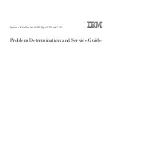
©
National Instruments Corporation
29
NI cDAQ-9172 User Guide and Specifications
Software-Timed Generations
With a software-timed generation, software controls the rate at which data
is generated. Software sends a separate command to the hardware to initiate
each DAC conversion. In NI-DAQmx, software-timed generations are
referred to as on-demand timing. Software-timed generations are also
referred to as immediate or static operations. They are typically used for
writing out a single value, such as a constant DC voltage.
The following considerations apply to software-timed generations:
•
If any AO channel on a module is used in a hardware-timed
(waveform) task, no channels on that module can be used in a
software-timed task.
•
You can configure software-timed generation to simultaneously
update.
•
Only one simultaneous update task can run at a time.
•
Simultaneous update is not restricted to 16 channels.
•
A hardware-timed AO task and a simultaneous update AO task cannot
run at the same time.
Hardware-Timed Generations
With a hardware-timed generation, a digital hardware signal controls the
rate of the generation. This signal can be generated internally on the chassis
or provided externally.
Hardware-timed generations have several advantages over software-timed
acquisitions:
•
The time between samples can be much shorter.
•
The timing between samples is deterministic.
•
Hardware-timed acquisitions can use hardware triggering.
Hardware-timed AO operations on the NI cDAQ-9172 chassis must be
buffered.
Buffered Analog Output
A buffer is a temporary storage in computer memory for generated
samples. In a buffered generation, data is moved from a host buffer to the
NI cDAQ-9172 onboard FIFO before it is written to the C Series I/O
modules.






































